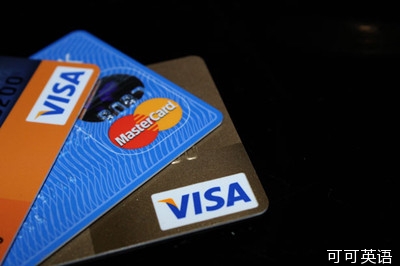財(cái)經(jīng)商業(yè)
Credit cards
信用卡
Skimming off the top
偷蒙拐騙
Why America has such a high rate of payment-card fraud.
美國(guó)支付卡詐騙頻發(fā)原因何在
AMERICA leads the world in many categories: shale-gas production, defence spending, incarceration rates and, alas, payment-card fraud.
美國(guó)在很多方面都引領(lǐng)世界:頁(yè)巖氣生產(chǎn),國(guó)防開(kāi)銷,監(jiān)禁率以及,嘖嘖嘖,支付卡詐騙。

In December Target, an American retailer, said that hackers had breached its network and stolen payment-card details of about 40m of its customers.
去年12月份,美國(guó)零售商塔吉特公司表示,黑客入侵了其網(wǎng)絡(luò)系統(tǒng)并竊取了約四千萬(wàn)名顧客的支付卡信息。
A few months before the Target breach, roughly 152m customers had their information stolen in a hack of Adobe Systems.
在塔吉特入侵事件發(fā)生幾個(gè)月之前,一次對(duì)Adobe系統(tǒng)的黑客入侵使得大約1億5200萬(wàn)顧客的信息被盜。
Last month Neiman-Marcus, a department store, reported a similar breach.
尼曼百貨商店也于上月報(bào)道了類似的入侵事件。
For crooks, there are rich pickings in such data.
對(duì)不法分子來(lái)說(shuō),這些數(shù)據(jù)有很大的利用價(jià)值。
Total global payment-card fraud losses were 11.3 billion in 2012, up nearly 15% from the prior year.
2012年,全球因支付卡詐騙造成的損失達(dá)到113億美元,比前一年增長(zhǎng)了15%。
The United States—the only country in which counterfeit-card fraud is consistently growing—accounted for 47% of that amount, according to the Nilson Report: card issuers lost 3.4 billion and merchants another 1.9 billion.
美國(guó)作為全球唯一一個(gè)偽造卡詐騙不斷增加的國(guó)家,占到了其中的47%:根據(jù)尼爾森報(bào)告,持卡人的損失為34億美元,而商戶們則是19億美元。
A survey released in 2012 by the Aite Group and ACI Worldwide, a research and a payment-software firm respectively, found that 42% of Americans had experienced some form of payment-card fraud in the preceding five years.
研究公司Aite Group和支付軟件公司ACI Worldwide發(fā)布于2012年的一項(xiàng)調(diào)查結(jié)果顯示,42%的美國(guó)人在調(diào)查之前的5年中都遇到過(guò)支付卡詐騙。
Nor is it just Americans who are affected: foreigners whose card data is stolen often find the thieves have little trouble waltzing into stores and making purchases with ersatz cards.
當(dāng)然受害的不僅僅是美國(guó)人:支付卡信息被盜取的外國(guó)顧客也經(jīng)常發(fā)現(xiàn)不法分子輕而易舉地就能在商店里用仿制的支付卡進(jìn)行購(gòu)買。
Europeans rack up more losses in this way in America than in any other country.
歐洲顧客在美因此類手段而遭受的損失要超過(guò)在其他地區(qū)。
In part, fraudsters target the United States because that's where the cards are.
詐騙犯瞄準(zhǔn)美國(guó)的一個(gè)原因是,大部分的支付卡都在這里。
At the end of 2013 there were 1.2 billion debit, credit and pre-paid cards in circulation in America—more than in any other region.
在2013年底,在美國(guó)流通的借記卡、信用卡和預(yù)付卡總數(shù)為12億—超過(guò)任何其他地區(qū)。
That is nearly five cards per adult.
平均每個(gè)成年人擁有近5張支付卡。
But America also makes things easy for fraudsters: alone among developed countries, it still relies exclusively on cards with magnetic strips, which are far less secure than the chip-and-PIN technology used elsewhere.
同時(shí)美國(guó)也讓詐騙犯?jìng)兏椎檬郑核前l(fā)達(dá)國(guó)家中唯一依然只使用卡片磁條作為安全手段的。
This combines a personal code with a microchip from which it is harder to extract data than a magnetic strip.
相比其他地區(qū)使用的芯片密碼技術(shù),這要不安全得多。芯片密碼技術(shù)將個(gè)人密碼存儲(chǔ)在微芯片中,從中提取出信息要比從磁條中提取困難得多。
As of 2012, 45% of the world's payment cards and 76% of terminals were equipped to use chip-and-PIN.
截至2012年,全世界45%的支付卡和76%的支付終端裝備了使用芯片密碼的設(shè)備。
By 2011 this technology had brought some forms of card fraud in Britain to their lowest level in two decades.
這項(xiàng)技術(shù)在2011年為英國(guó)將各種形式的支付卡詐騙降低到了20年中的最低水平。
The spread of chipped cards in Canada brought losses from skimming—stealing data from credit cards—from C142m in 2009 to C38.5m in 2012.
而在加拿大,芯片卡的普及也使盜取信用卡信息引起的損失從2009年的1億4200萬(wàn)加元減少到了2012年的3850萬(wàn)加元。
At a series of Senate hearings earlier this month, Target's CFO said it would spend 100m to roll out chip-and-PIN store-issued credit cards and payment devices that accept them.
本月早些時(shí)候,在一系列參議院聽(tīng)證會(huì)上,塔吉特的財(cái)務(wù)總監(jiān)表示該公司會(huì)斥資1億美元推行采用芯片密碼的商店發(fā)行信用卡以及相應(yīng)的支付設(shè)備。
A consumer advocate urged other card issuers to do the same.
消費(fèi)者呼吁其他支付卡發(fā)行商也采取類似措施。
Though the switch may cost issuers and merchants as much as 8 billion, interest at long last appears to be growing.
雖然這樣做會(huì)給發(fā)行商與商戶們?cè)黾痈哌_(dá)80億美元的開(kāi)銷,但長(zhǎng)期利益將不斷顯現(xiàn)。
Many of those costs may be recoverable over time through lower fraud losses.
這些花費(fèi)中的大部分會(huì)通過(guò)降低詐騙導(dǎo)致的損失而得到補(bǔ)償。
Chip-and-PIN would also harmonise American and global standards, making it easier for Americans to use their cards abroad and foreigners to use theirs in America.
芯片密碼技術(shù)還會(huì)統(tǒng)一美國(guó)和全球標(biāo)準(zhǔn),利于美國(guó)民眾在境外以及國(guó)外顧客在美國(guó)境內(nèi)刷卡消費(fèi)。
It will make mobile payments easier.
這將使移動(dòng)支付更為便利。
And because recent banking regulations have reduced the amount of money banks make from interchange fees on debit cards, issuers are looking to trim costs elsewhere.
由于銀行業(yè)中新出臺(tái)的法規(guī)使得銀行借記卡交換費(fèi)的收入減少,支付卡發(fā)行方們正想方設(shè)法削減開(kāi)支,
Fraud losses no longer seem as manageable as they once did.
而詐騙引起的損失看來(lái)沒(méi)有往日那樣容易控制了。



